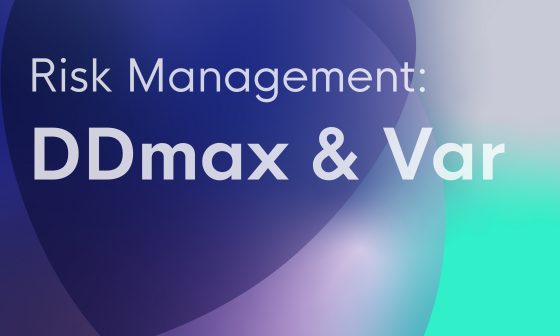Part 1 – Trend following
Trend following crypto trading strategies try to ride the price momentum of the cryptocurrency in the direction that it’s headed. Price is going up or down and you want to open a position in an established trend. Then close it when the trend stops. The classic buy low – sell high.
Most legendary traders were using trend following strategies. You’ve probably heard of Jesse Livermore and Ed Seykota, well trend following was how they got their success. It’s far from a novel concept, yet – it should be approached as default settings for any new trader.
What are trend following strategies?
Trend following strategies should help you identify:
1) if a trend is present in the market and
2) if it is worth it to interact with it (enter or exit the market)
You’re looking for already established trends. Entering market reliably usually means looking for either a breakout of a consolidation zone or a retracement of the trend. Ideally, you’d exit the market right at the moment when it is confirmed that the trend is ending.
But how do you distinguish between stronger retracement and trend change? And how can you time the entry correctly? Well, that’s where technical indicators, candlestick patterns, price action, and other tools you rely on come into play.
In all our articles we always emphasize the importance of backtesting and this one is no exception. There is no way around it – if you want to achieve long-term profitability in trading, backtesting is the first crucial step towards that.
Luckily, we have built a tool to make it easy for you to investigate your own versions by backtesting or paper trading them before going live.
In crypto trading trend can mean massive moves. It doesn’t matter if you are a beginner or a seasoned trader, it’s good to have a few of these strategies up your sleeve to profit from emerging trends.
If you are running a crypto bot, it means you gave it some instructions and now it can run a trend following crypto strategy.
Let’s look at a few:
Examples of trend following strategies
1.Moving averages
Moving averages are an extremely diverse tool that can help you capture trends or act as support and resistance. They appear as lines of price averaged over the period you have chosen: 10 days, 30 mins, 3 years – whatever you prefer.
If the line is curving up or down, it’s a trend. If it’s mostly horizontal, it’s a ranging market.
Moving average crossovers are a popular way of trading crypto. When a “shorter” moving average crosses up a “longer” an uptrend should be starting.
For example, trading the 2-hour DOT/UST chart by EMA(12) – the red line crossing the EMA(26) – the blue line:

Source: TradingView
You would have caught a nice breakout. Not closing at the very top, but would have avoided a lot of the drawdown till the next signal to open a position.
Notice how after opening the position there is an accumulation period where the two EMAs get quite close together. This implies lower volatility, but also underlines the importance of a strategy. Without it you might have had doubts and closed your position early.
Moving averages crossover strategy:
Open position when EMA (12) is crossing up EMA (26)
Close position when EMA (12) is crossing down EMA (26)
2.Hull Moving Average (HMA)
To add to the previous moving averages approach, you could also use price interacting with the moving average itself.
The HMA is a reactive moving average that is popular in crypto trading. It plots as a line on the chart. On the 4-hour ETH/BTC chart we can see what our positions would look like using the HMA with a length of 25:

Source: TradingView
This strategy during October 2020 would have proven fruitful. It closes our positions in crucial moments of steep drawdown. It also captures the tops nicely which is exactly what we want from a trend following crypto strategy.
HMA strategy:
Open position when Price is crossing up HMA (25)
Open position when Price is crossing down HMA (25)
3.Volume
There are no price movements without volume. On Balance Volume (OBV) is a handy indicator to gauge if price might move. The volume of green candles is added to total volume and the volume of red candles is subtracted.
Raising OBV might signify a price increase. On the XRP/USDT 1-hour chart we can see that a sustained uptrend in OBV may be a predecessor to a sustained price increase.

Source: TradingView
In case you note a constant increase in OBV that has not managed to pressure price yet, it could be a great opportunity to open a position.
Volume/OBV strategy:
Open position when OBV is up by 4% in last 10 hours
Close position when OBV is down by 4% in last 10 hours
4.Bullish/bearish engulfing
Using candlestick patterns in crypto trading is still quite popular and may be effective. Bullish or bearish engulfing candles are among the easiest to spot.
A bullish engulfing forms when after a red candle a green one appears. This second candle is large, completely contains the first one in its body. The bearish version is the same with a sizable red candle appearing after a green one.

Should we devise an engulfing strategy, we can open a position when we see a bullish form. This would signify the beginning of a bullish reversal. Then we will close the position when we encounter the bearish counterpart as a bearish reversal may be coming,

Source: TradingView
On the daily AION/BTC chart we can see an example of a bullish engulfing appearing on January 15th. The bearish counterpart on January 25th would signify our close with a profit of about 20%.
Engulfing strategy:
Open position when candle is Bullish Engulfing
Close position when candle is Bearish Engulfing
5.Moving Average Convergence Divergence (MACD)
It’s an incredibly popular indicator that employs a fast MA (usually period of 12) and a slow MA (usually period of 26) and creates line from their difference – the MACD line. Interaction of this MACD line with the other line – Signal line (period of 9) creates the histogram that oscillates around 0.
When it is above 0 (green) it is likely that the cryptocurrency is trending up. That should change when the histogram is below 0 (red).
Let’s see what is looks like in practice on the 4-hour BNB/USDT chart:

Source: TradngView
We would have captured some positions riding the trend nicely.
MACD strategy:
Open position when MACD histogram is crossing up 0
Close position when MACD histogram is crossing down 0
Conclusion:
Trend following strategies can work nicely for the volatility that cryptocurrencies face daily. There’s no lack of approaches or indicators that can be used, however it is crucial to investigate how the strategy would actually perform.
There is always room for improvement. You don’t want to be leaving money on the table by opening positions too late or closing them too early. The next step would be to backtest the strategies on the specific cryptocurencies you are trading, using historical data that matches a trending market.
The best backtester in crypto should provide:
- No programming – only typing
- Out-of-the-box historical data from multiple exchanges like Binance, Coinbase Pro and others
- Loaded with indicators, price action, candlestick patterns, crypot fundamentals and more
- Automatic risk calculations
- Free
Check out CLEO.one. Simply create an account and start backtesting for free.
When you link your Binance account you get even more backtests and you can run your best strategies as crypto bots for free. Sign up now!







